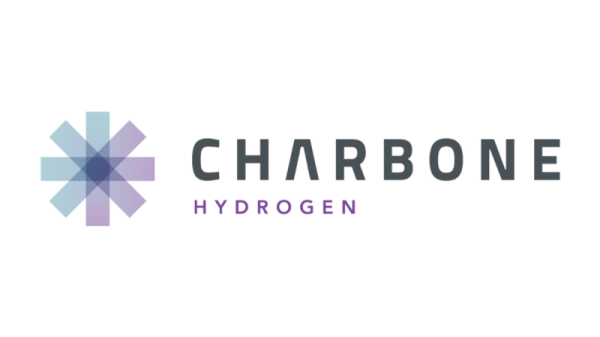When South African startup Renergen bought the production and exploration rights for some grassy fields near Virginia, a town in the country’s Free State province, the founders were expecting to find small natural gas reserves that could power nearby mining opportunities.
They paid $1 for the rights in 2013, according to CEO Stefano Marani, and started to test the composition of the gas flowing from two rusted drill pipes that had been installed years before for mineral exploration. What they found was abnormally high concentrations of helium.
Beyond inflating party balloons, helium has a number of commercial applications. When condensed into a liquid form, it’s an essential cooling component used in the manufacture of microchips and in the operation of life-saving MRI scanning technology. Yet global helium prices are volatile and supplies erratic, with the gas produced in fewer than 10 countries in the world.
Renergen had unwittingly struck gold. Today, the company says it has proven helium reserves of more than 7 billion cubic feet at the Virginia Gas Project that could be worth more than $4 billion, and potentially up to $12 billion when including further possible reserves.
“We had humble, modest aspirations of setting up a small scale [gas] power station that could deliver a couple of megawatts to some nearby mining opportunities,” recalls Nick Mitchell, Renergen’s chief operating officer. “We had no idea of the extent and scale and the sheer world-class nature of this helium deposit.”
The company successfully produced liquid helium from the plant for the first time in January 2023. After delays throughout the year due to a leak in the vacuum seal of the helium cold box, it hopes to begin commercial operations within the next month, extracting helium alongside natural gas, then processing and distributing it to customers, such as Linde, a global engineering firm.
From railways to ports, these infrastructure megaprojects are reshaping Africa
Smaller footprint
What makes Renergen’s natural gas reserves so special is the unusually high concentration of helium. Marani says that it averages 3%, and in some places reaches as high as 12%. In contrast, the US, the world’s biggest supplier of helium, has an average concentration of 0.35%, and Qatar, another major player, averages 0.04%, according to the US Bureau of Land Management.
This could make Renergen’s helium more eco-friendly, according to Chris Ballentine, chair of geochemistry at Oxford University in the UK. Generally, helium is produced as a byproduct of liquefied natural gas (LNG) – a mix of gases that is primarily methane – he explains, and it’s only at a certain concentration (usually around 0.3%) that it becomes economically worthwhile to extract helium by itself.
This means that most of the time, helium supply is dominated by hydrocarbon producers that are extracting and selling helium on the side, and production is therefore linked to a high carbon footprint, he continues. But a higher helium concentration means less associated methane is produced, thereby reducing its carbon footprint.
“What makes the Renergen prospects so interesting is that (while) there are hydrocarbons associated with their helium production, it’s a much smaller footprint. They’ve effectively found a primary helium gas system,” he says.
Ultimately, Ballentine hopes the industry will move away from producing helium from LNG, and use sources such as gas fields where helium occurs alongside nitrogen, as explored in a recent study that he co-authored.
Another benefit of the high concentration is cheaper production. “We’re a much lower-cost producer of helium than most other players out there,” says Marani. “We drill very shallow wells, probably in the region of about 1,000 to 1,500 feet – low cost, small footprint – and then the gas comes out naturally of its own volition,” he says.
Africa’s supply point
With the global helium supply frequently disrupted, a new player in a different geographical region is very welcome, says Ballentine. “We are currently in a supply crisis, because we only have a few limited supply points … places like Renergen will certainly alleviate that,” he says.
Currently, none of the world’s helium is produced in Africa – helium-rich gas fields have been located in Tanzania, but are not yet in commercial production.
Marani notes that Renergen’s gas project was designated a “strategic integrated project” by the South African government, helping to speed up regulatory approval processes.
According to Mitchell, the company’s “phase one project,” a small pilot funded by the US government, will produce around 350 kilograms of helium per day – enough to satisfy all of South Africa’s requirements and still have excess. Its “phase two project,” which is anticipated to come online in 2027 and has received financing from the US government and South Africa’s Standard Bank, is expected to ramp up production to 4.2 tons per day – producing somewhere between 6% and 8% of the world’s global helium supply. With the global helium market predicted to be worth more than $6 billion in 2027, according to the firm Research and Markets, that would generate significant returns.
In December, the company announced it had sold 5.5% of the equity in Tetra4, Renergen’s subsidiary that owns and operates the Virginia Gas Project, for 550 million rand ($29 million) to Mahlako Energy Fund and Third Way Investment, two investment management firms based in Johannesburg. It plans to raise more equity via an initial public offering (IPO) on the Nasdaq stock market in the US. The company is already listed in South Africa and Australia.
“Building up confidence is going to take a very long time, I’ve got no illusions about that,” says Marani. “I believe that the helium turn-on is the first step in that process.”
Eleni Giokos, Michael Cross and Tom Bouchier Hayes contributed to this report.







































